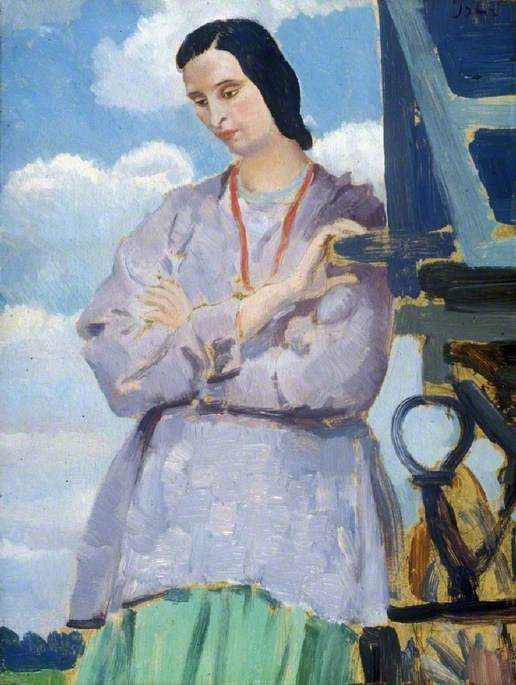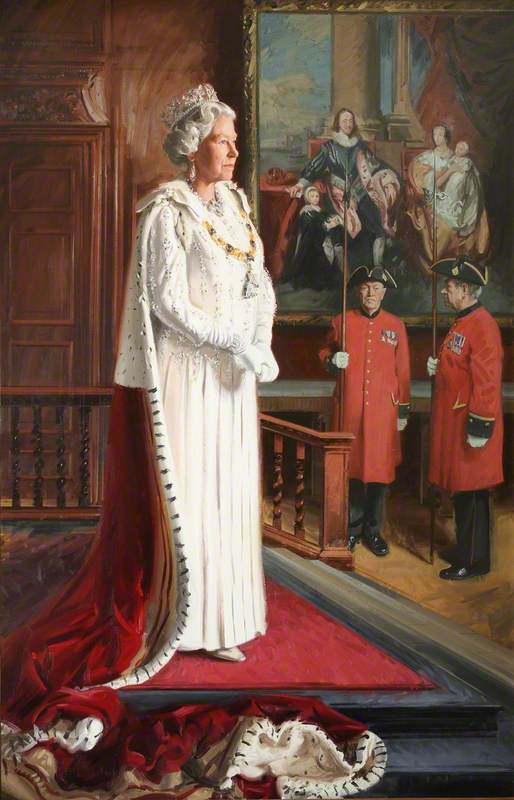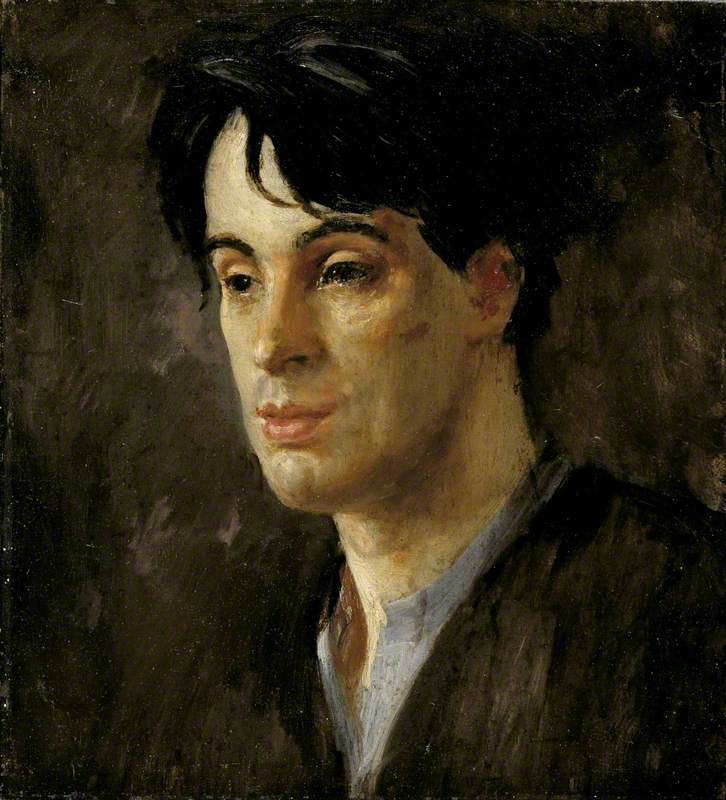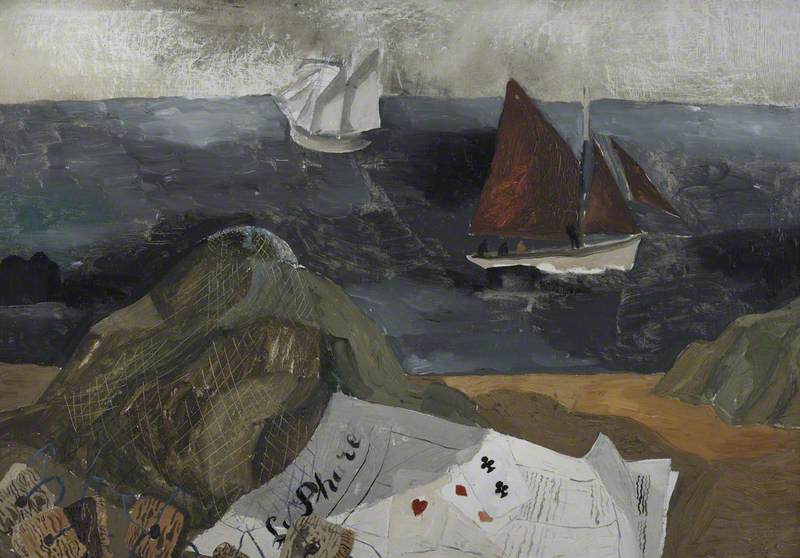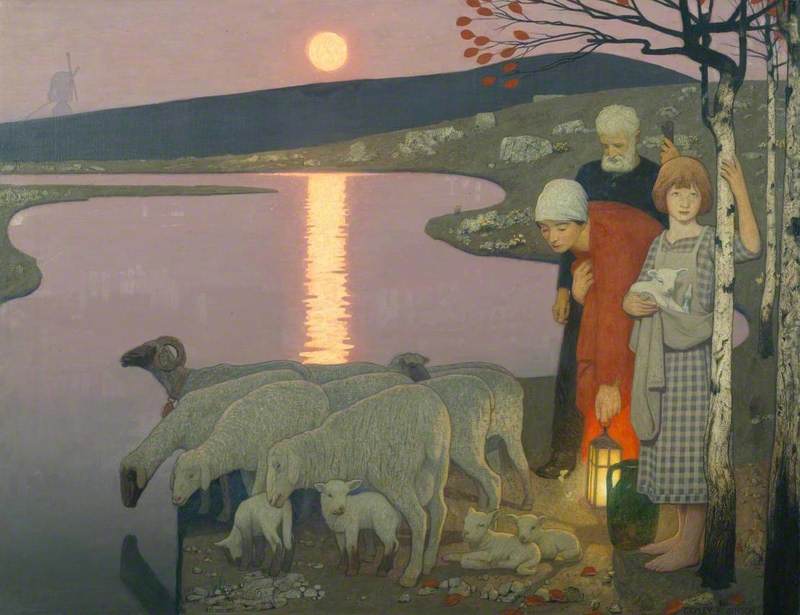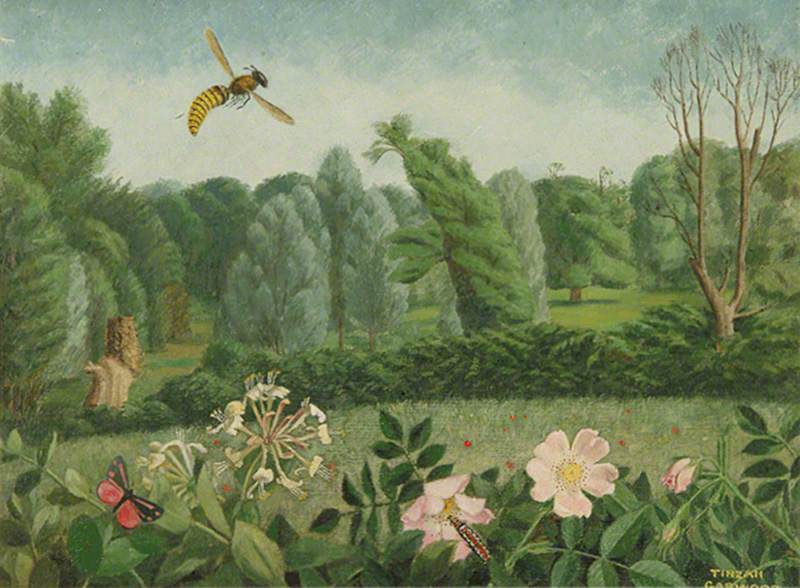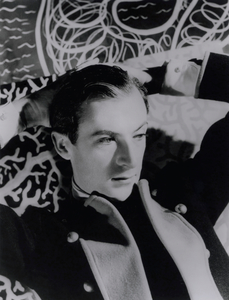The National Portrait Gallery in London is closed until 2023 for a major refurbishment and a redisplay of the collection. Before the Gallery closed due to COVID-19 on 17th March 2020, it had just opened the exhibition 'Cecil Beaton's Bright Young Things' on 12th March. It explored the world of the infamous bohemian group of socialites, through the illustrious lens of the famed British photographer.

© Estate of Paul Tanqueray. Image credit: National Portrait Gallery, London
Cecil Beaton
1937, photograph by Paul Tanqueray (1905–1991)
The 'bright young things', also known as 'the bright young people', combined aristocratic high society and the aspiring middle class with members of the cultural avant-garde. In his digital tour of the exhibition, the curator Robin Muir quoted the response of English writer and critic Lytton Strachey on meeting the eccentric revellers: 'I saw these marvellous people, they were absolutely beautiful, but they had feathers where brains should be.'
Committed to zealous debauchery, Beaton's circle was notorious for their hedonistic lifestyle, famous for drinking to excess and indulging in drugs, in addition to throwing charity balls, theatrical fancy dress pageants, hosting weekend-long country house parties, and organising scavenger hunts across London. Against the backdrop of the 'roaring twenties', their indulgent, wild behaviour captivated the public imagination. They were regularly chased by the paparazzi, with many of the group leveraging this tabloid attention to further their fame.
The name 'Bright Young People' was initially coined by a Daily Mail headline in 1924. In addition to becoming a notable society fixture himself, Beaton's photographs played a key part in promoting their public image.

© the copyright holder. Image credit: The Cecil Beaton Studio Archive
Cecil Beaton at Sandwich
1920s, photograph by unknown artist
Focused on Beaton's formative years, the exhibition at the National Portrait Gallery spanned from 1924, when his first photograph was published in the April issue of Vogue, to the late 1930s. Born into a middle-class suburban household, an ambitious Beaton pursued photography from a young age, and his first models were his sisters Baba and Nancy.

© the artist's estate. Image credit: The Cecil Beaton Studio Archive
Nancy and Baba Beaton
1926, photograph by Cecil Beaton (1904–1980)
In 1922, during his time at King's College, Cambridge, Beaton became involved in undergraduate theatre, which how he ended up taking the aforementioned photograph featured by Vogue, of George 'Dadie' Rylands in costume for a production of Webster's The Duchess of Malfi at the ADC Theatre.

© the artist's estate. Image credit: The Cecil Beaton Studio Archive
George 'Dadie' Rylands as the Duchess of Malfi
1924, photograph by Cecil Beaton (1904–1980)
In 1926, the magazine offered him a contract as a society photographer. His career flourished under the magazine's patronage, and as a young arriviste, it also allowed him access to the upper echelons of society.
By borrowing references from the emerging Surrealist movement, and integrating these motifs with the decadent trappings of Rococo embellishment, Muir has referred to Beaton's style as 'combining the modes of Edwardian stage portraiture and the European avant-garde with an almost forensic examination of upper-class manners.' This is perhaps best encapsulated by his 1926 photograph of the poet Edith Sitwell at her home, Sussex Gardens.

© the artist's estate. Image credit: The Cecil Beaton Studio Archive
Edith Sitwell at Sussex Gardens
1926, photograph by Cecil Beaton (1904–1980)
The scene is configured like a medieval tomb effigy, with Sitwell lying on the chequerboard floor dressed in her finery, with two stone cherubs at her head and bunches of white lilies arranged along her body.
In the late 1920s, Beaton befriended Stephen Tennant, the youngest son of the Earl of Glenconnor, who regularly entertained at his mother's house: Wilsford Manor in Wiltshire.
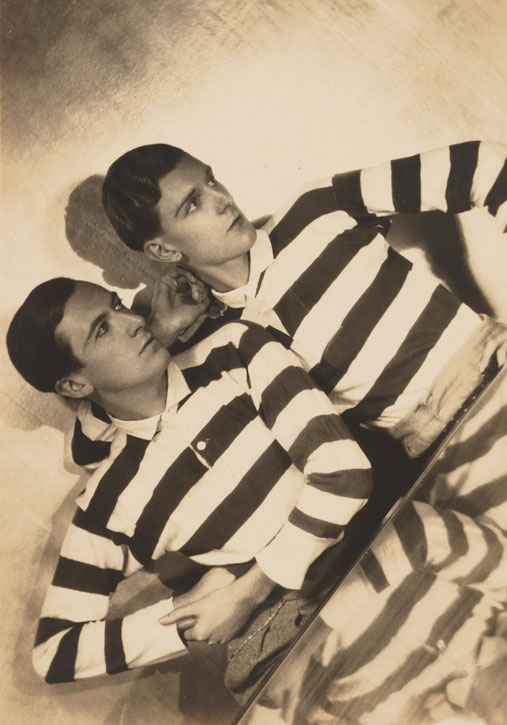
© the artists' estates. Image credit: National Portrait Gallery, London
Cecil Beaton and Stephen Tennant
1927, photograph by Maurice Beck (1886–1960) and Helen Macgregor
Famous for his languid attitude to life, and proclaimed as 'the man who stayed in bed', Tennant is said to have inspired the character of Sebastian Flyte in Evelyn Waugh's Brideshead Revisited (1945) and Cedric Hampton in Nancy Mitford's Love in a Cold Climate (1949). Waugh's earlier novel Vile Bodies (1930) is renowned for its sharp and scathing satirical portrait of his social milieu.
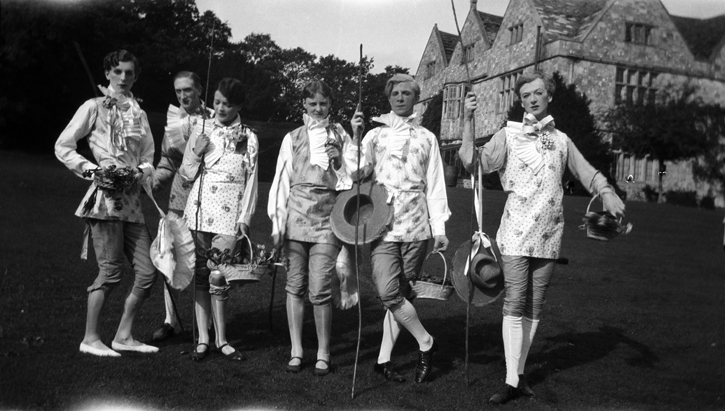
© the artist's estate. Image credit: The Cecil Beaton Studio Archive
The Bright Young Things at Wilsford
1927, photograph by Cecil Beaton (1904–1980)
Beaton's 1927 photograph of Tennant with the artist Rex Whistler and composer William Walton, among others, dressed as eighteenth-century shepherds and posing on the grounds of Wilsford, is now regarded as one of the quintessential images of the group.
Whistler was a particularly fashionable painter. In the same year, he had been commissioned to paint a mural for the newly launched restaurant at Tate Britain. The resulting work, titled The Expedition in Pursuit of Rare Meats, was said to be inspired by a whimsical, arcadian story Whistler had devised with the novelist Edith Olivier, who lived at Daye House on Lord Pembroke's Wilton estate.
Critics have recently petitioned for the removal of the mural, due to the racist imagery within it, notably Whistler's distressing representations of enslaved black children. Imperialist attitudes were unfortunately common, with Beaton himself being fired from Vogue in 1938 after submitting a work for the magazine in which he had left antisemitic slurs in the margins of the design.

Image credit: Salisbury & South Wiltshire Museum
Edith Olivier (1872–1948), on a Day Bed at the Rear of Daye House 1942
Rex Whistler (1905–1944)
Salisbury & South Wiltshire MuseumThrough her close friendship with Whistler, Olivier began to host other members of his social and artistic set, befriending Tennant, who was her neighbour, Beaton, and others. She even helped discover Ashcombe House, which became Beaton's lavish home, and the hallowed venue of numerous glamorous parties and extended trips.
Photographs taken by Beaton throughout the late 1920s and early 1930s demonstrate the extent of his circle.

© the artist's estate. Image credit: The Cecil Beaton Studio Archive
Edward Le Bas as Mrs Vulpy in 'The Watched Pot'
1924, photograph by Cecil Beaton (1904–1980)

© the artist's estate. Image credit: The Cecil Beaton Studio Archive
Oliver Messel in his costume for Paris in 'Helen!'
1932, photograph by Cecil Beaton (1904–1980)
The artist Edward Le Bas, the stage designer Oliver Messel, the novelist Daphne du Maurier, modernist poet Iris Tree, actors Anna May Wong and Tallulah Bankhead all feature.

© the artist's estate. Image credit: The Cecil Beaton Studio Archive
Anna May Wong
1929, photograph by Cecil Beaton (1904–1980)
He also photographed the glamorous socialites Baba d'Erlanger, Princesse de Faucigny-Lucing and Paula Gellibrand, the Marquesa de Casa Maury.

© the artist's estate. Image credit: The Cecil Beaton Studio Archive
Paula Gellibrand, Marquesa de Casa Maury
1928, photograph by Cecil Beaton (1904–1980)
Baba d'Erlanger and Paula Gellibrand were such inseparable friends that they became known as 'the twins'. In the 1921 double portrait by Augustus John (lent to the exhibition from a private collection), the artist played on their contrasting, glamorous looks: Baba, dark and brooding, and Paula, blonde and glowing.
Augustus John, an extroverted painter and draughtsmen, was described by Wyndham Lewis as 'a great man of action into whose hands the fairies had placed a paintbrush instead of a sword'. In the early 1900s, he travelled the country in a caravan with both his wife Ida Nettleship and his mistress Dorothy (Dorelia) McNeill. His heavy drinking and promiscuity also led to rumours that he fathered over one hundred children.
John had a romantic affair with the influential patron and eccentric society hostess Ottoline Morrell in 1908, whose country home in Oxford, Garsington Manor, was a refuge for pacifist intellectuals, artists, and writers during the First World War. Morrell was also romantically involved with Henry Lamb, who had defied his family and abandoned his studies of medicine in 1906 in order to study painting at the Chelsea School of Art.
Lamb married Lady Pansy Pakenham in 1928. They hosted numerous members of the cultural elite at their home at Coombe Bisset, Wiltshire, and his notable portraits include ones of Waugh, Beaton, and his brother-in-law, Anthony Powell, the author of the 12-volume series A Dance to the Music of Time (1951–1975).
Ambrose McEvoy, who had studied alongside John, was another successful portrait artist. Encouraged by James Abbott McNeill Whistler, he enrolled at the Slade School of Art at 15 years old. McEvoy painted Lois Sturt, another prominent member of the bright young things, on numerous occasions.
By the time she was 20, seven portraits of her existed, all of which were exhibited at the National Portrait Gallery's annual exhibition in 1921. Sturt was a particularly wild and exuberant figure. In his biography, William Cross' refers to her as a 'dazzling, single-minded, one-off personality'. Her death in 1937 from a sudden heart attack while travelling through Budapest was determined as a result of alcohol and drug abuse and hazardous diet treatments.

Image credit: Philip Mould & Company
The Honourable Lois Sturt
1920, oil on canvas by Ambrose McEvoy (1878–1927)
McEvoy's painting of Sturt was selected by Muir as the closing work in 'Cecil Beaton's Bright Young Things', a poignant reminder that after the party was over, brought to a halt by the darkness of the Second World War, many of these glittering figures met tragic ends, either on the war's frontlines or through overdoses or suicide. However, through photography and portraiture, they are immortalised in their carefree, extravagant prime.
Philomena Epps, writer





